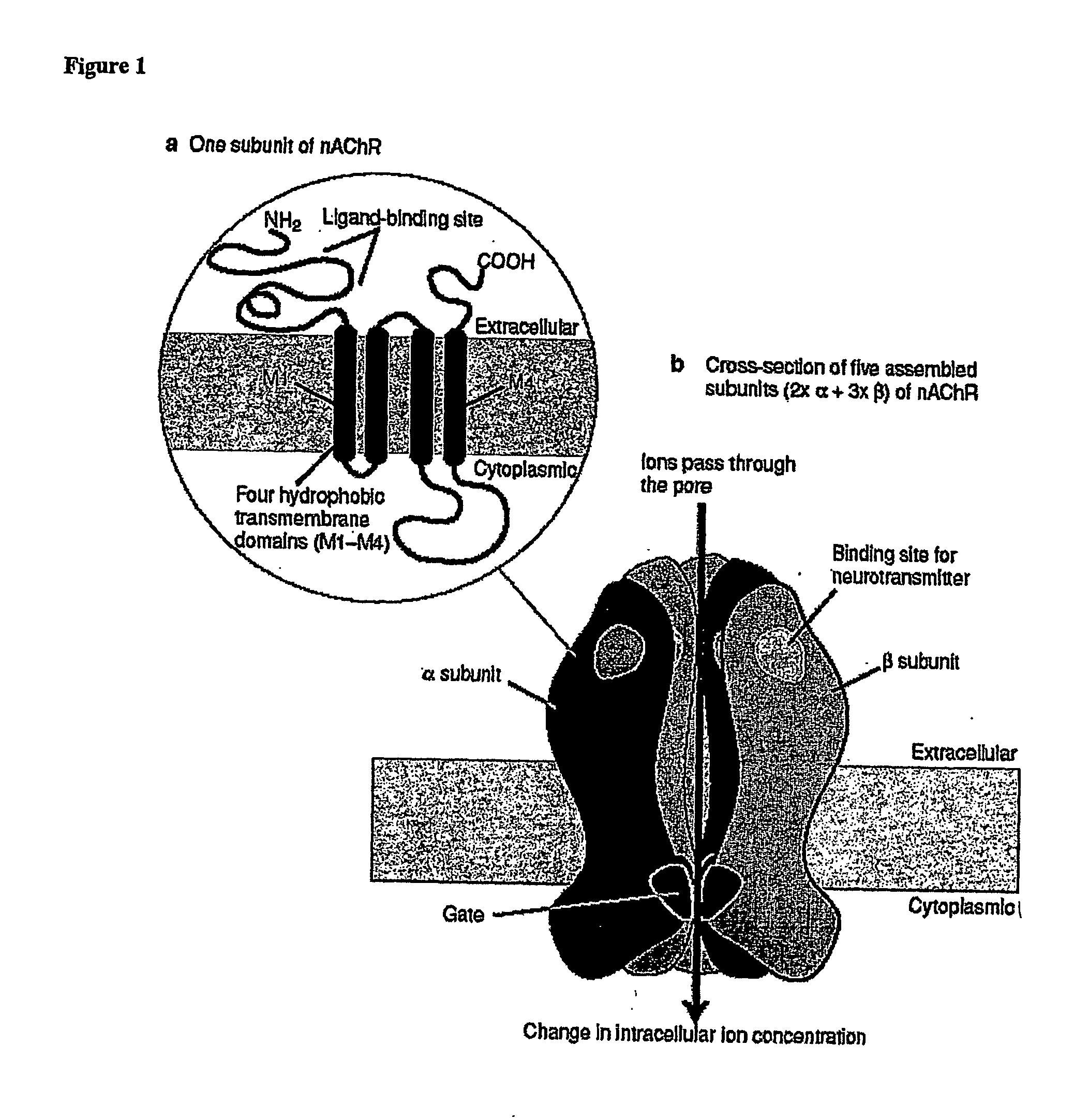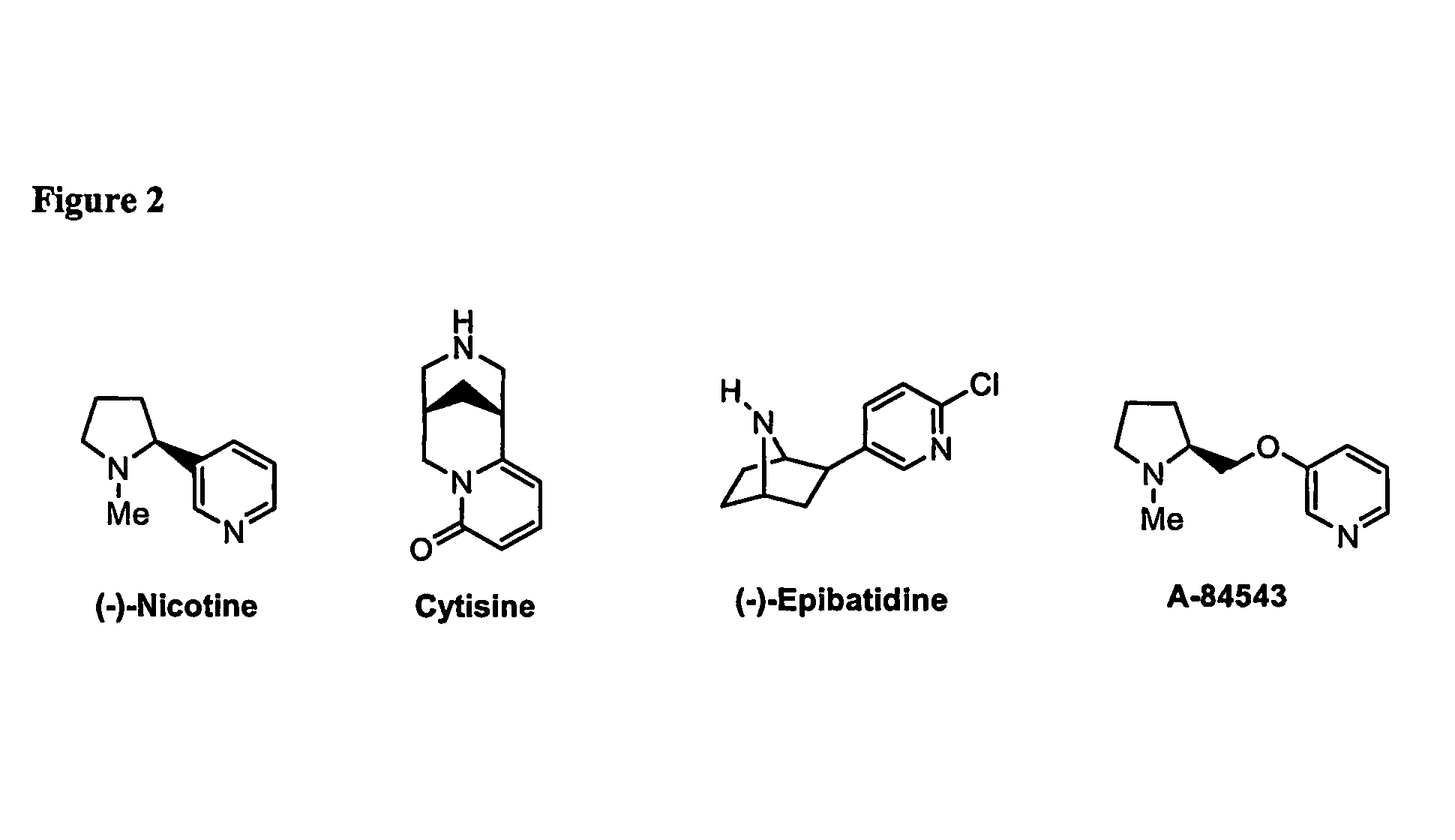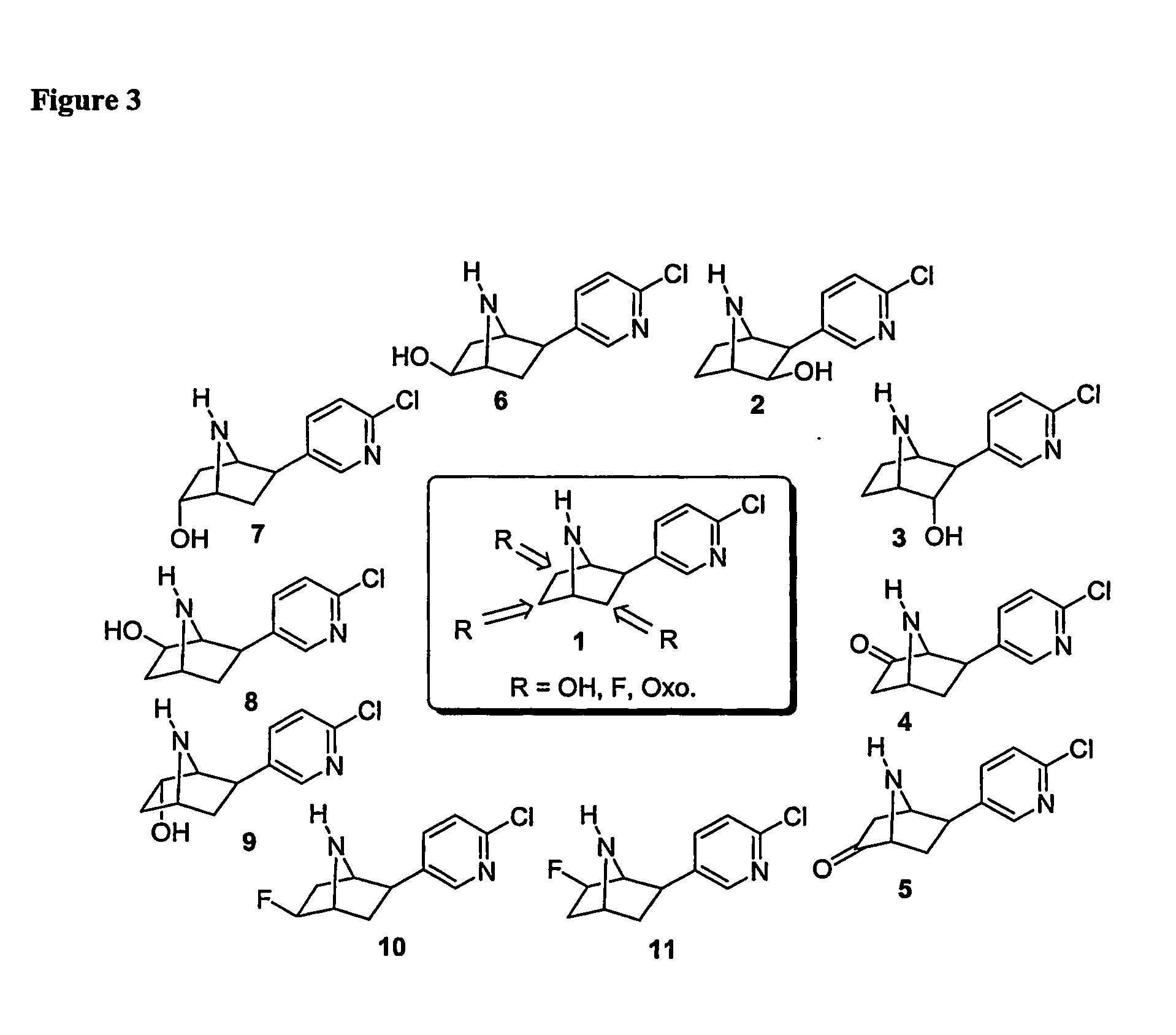Ligands for Nicotinic Acetylcholine Receptors, and Methods of Making and Using Them
a technology of nicotinic acetylcholine receptor and ligand, which is applied in the direction of heterocyclic compound active ingredients, biocide, drug compositions, etc., can solve the problems of reducing the activity of nicotinic receptors associated with dopaminergic neurons, affecting the release process, and reducing the number of nicotinic receptors
- Summary
- Abstract
- Description
- Claims
- Application Information
AI Technical Summary
Benefits of technology
Problems solved by technology
Method used
Image
Examples
Embodiment Construction
Definitions
[0132]For convenience, certain terms employed in the specification, examples, and appended claims are collected here.
[0133]The articles “a”, and “an” are used herein to refer to one or to more than one (i.e., to at least one) of the grammatical object of the article. By way of example, “an element” means one element or more than one element.
[0134]The term “ED50” means the dose of a drug which produces 50% of its maximum response or effect. Alternatively, the dose which produces a predetermined response in 50% of test subjects or preparations.
[0135]The term “LD50” means the dose of a drug which is lethal in 50% of test subjects.
[0136]The term “therapeutic index” refers to the therapeutic index of a drug defined as LD50 / ED50.
[0137]The term “structure-activity relationship (SAR)” refers to the way in which altering the molecular structure of drugs alters their interaction with a receptor, enzyme, etc.
[0138]The term “agonist” refers to a compound that mimics the action of nat...
PUM
| Property | Measurement | Unit |
|---|---|---|
| pH | aaaaa | aaaaa |
| time | aaaaa | aaaaa |
| pH | aaaaa | aaaaa |
Abstract
Description
Claims
Application Information
 Login to View More
Login to View More - R&D
- Intellectual Property
- Life Sciences
- Materials
- Tech Scout
- Unparalleled Data Quality
- Higher Quality Content
- 60% Fewer Hallucinations
Browse by: Latest US Patents, China's latest patents, Technical Efficacy Thesaurus, Application Domain, Technology Topic, Popular Technical Reports.
© 2025 PatSnap. All rights reserved.Legal|Privacy policy|Modern Slavery Act Transparency Statement|Sitemap|About US| Contact US: help@patsnap.com



